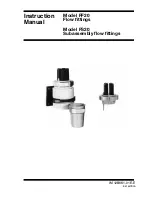
6
CHOOSING THE CORRECT
ELECTRODES AND SENSORS
Choosing the proper electrode and sensor length is vital to
the proper operation of the unit.
Electrodes and sensors should be long enough to make
good contact with the dog’s skin without being so long as
to interfere with the dog’s normal breathing.
***Tip: With some longer haired dogs it can be beneficial
to trim the hair around the area of the voice box.***
CAUTION
When screwing in the electrodes and sensor,
tighten by hand only. Proper hand tightening will
allow the electrodes and sensor to vibrate for
maximum stimulation. Over tightening can cause
damage to the unit.
7
ADJUSTING & POSITIONING YOUR COLLAR
FOR PROPER FIT
•
All electronic collars need to be very snug to work
properly. They must be just tight enough to allow the
electrodes and the sensor to make good skin contact.
•
If your collar is too loose, the stimulation may not work
properly because good skin contact is not being achieved.
This can directly affect the stimulation performance and
whether or not the dog will receive the stimulation. Always
check for good contact if it appears that your dog is not
responding to the stimulation.
•
A loose collar can promote skin irritation from moving or
rubbing too much on a dog’s neck while they are running or
training. The proper snug fit will help prevent this from
occurring.
•
Proper fit of the collar is extremely important. It should be
just tight enough on the dog’s neck to make good skin
contact while still allowing the dog to breath normally. The
collar should never be so tight that it restricts the dog’s
normal breathing pattern.
•
For proper positioning of your collar receiver box, it should
be placed so that the electrodes and sensor are facing the
dog’s vocal cords.
•
Check your dog’s neck daily for signs of possible irritation.
Proper collar tightness and position are very important to
insure safety and correct functioning every time you use
the collar.






























